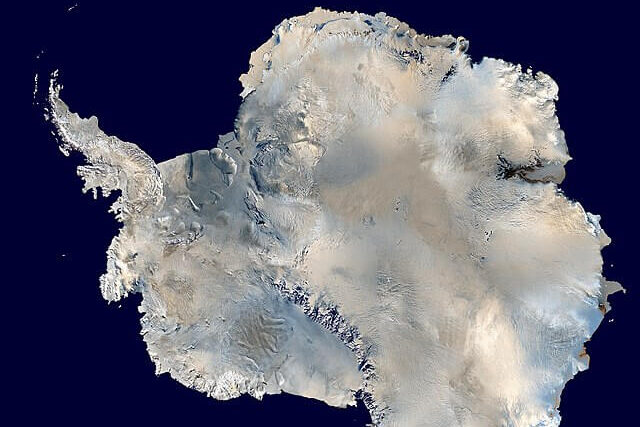
Recent observations of record-low Antarctic sea ice may signal the onset of a new era marked by reduced sea ice cover due to rising temperatures, according to research conducted by Australian scientists.
The study reveals a “breakdown” in the relationship between sea ice and the Antarctic atmosphere, indicating the region may have transitioned into a “new regime” where established connections no longer govern sea ice variability.
“While for many years Antarctic sea ice increased despite increasing global temperatures, it appears that we may now be seeing the inevitable decline, long projected by climate models,” the study found.
The implications of this “regime shift” in sea ice coverage are expected to be profound, impacting both local Antarctic ecosystems and the global climate system.
“Over the past seven summers there have been three record [sea ice] minimums,” said the study’s lead author, Dr Ariaan Purich of Monash University and the Securing Antarctica’s Environmental Future program.
Over several decades, Antarctic sea ice had steadily increased, reaching its peak in 2014. However, by mid-2016, it entered a phase of low sea ice extent.
In February 2022, a new record minimum sea ice extent was recorded, and on February 19 of this year, the extent of Antarctic sea ice was observed to be just 1.77 million square kilometers, representing a 36% decrease from the daily minimum sea ice coverage observed between 1979 and 2022.
“In 2022 and again this summer, the hemispheric winds [linked to a positive phase of the southern annular mode] suggested there should have been higher-than-usual sea ice, and yet we had two record low sea ice summers,” Purich said. “Sea ice doesn’t seem to be responding to the atmosphere in the same way that it used to … suggesting something else is at play.”
The researchers identified a close connection between the loss of sea ice and subsurface warming of the Southern Ocean.
“We’ve found that the ocean – particularly 100-200m below the surface – started warming really noticeably a year or two before we saw this change in the sea ice system, and has stayed warm ever since,” said study co-author Dr Edward Doddridge from the Australian Antarctic Program Partnership at the University of Tasmania. “The sea ice loss lined up with areas where warming happened most.”
While they acknowledge the possibility that the observed trend in recent years could be due to natural variability in the Antarctic sea ice system, the satellite record for the region only dates back to 1979.
“While variability may be contributing in some part to the current subsurface ocean warming, we also know that increasing greenhouse gases and increasing temperatures are also contributing,” Purich said.
“The thing that is really confronting is that this decline continues. We’re not at some record low now that we’re going to stay at. If we keep increasing greenhouse gas [emissions], the models tell us the sea ice is going to keep declining further.”
The decline in sea ice is likely to have significant consequences for Antarctic species, including krill, a foundational species in the Southern Ocean food web, as well as animals that depend on the ice, such as Weddell and crabeater seals. Notably, the break-up of usually stable sea ice last summer is believed to have led to the deaths of thousands of emperor penguin chicks, which had not yet developed their waterproof feathers.
Antarctic sea ice also plays a crucial role in the Southern Ocean overturning circulation, a deep ocean current. “This influences how the ocean uptakes heat and carbon,” Purich said.
According to Professor Matthew England, an oceanographer and climate scientist at the University of New South Wales, who was not involved in the study, ocean warming is the primary driver behind the loss of Antarctic sea ice.
This development is concerning for two main reasons. Firstly, the loss of sea ice exposes ice shelves, contributing to sea level rise. Secondly, the reduction in sea ice increases the extent of dark ocean water that absorbs solar energy, creating a feedback loop that exacerbates warming.
“If we lose Antarctic sea ice we lose that reflectivity, and so you get more ocean warming,” England said.
“The knock-on effects to losing sea ice are profound.”
——————————————————————————
At Natural World Fund, we are passionate about stopping the decline in our wildlife.
The decline in our wildlife is shocking and frightening. Without much more support, many of the animals we know and love will continue in their decline towards extinction.
When you help to restore a patch of degraded land through rewilding to forests, meadows, or wetlands, you have a massive impact on the biodiversity at a local level. You give animals a home and food that they otherwise would not have had, and it has a positive snowball effect on the food chain.
We are convinced that this is much better for the UK than growing lots of fast-growing coniferous trees, solely to remove carbon, that don’t actually help our animals to thrive.
This is why we stand for restoring nature in the UK through responsible rewilding. For us, it is the right thing to do. Let’s do what’s right for nature!
Donate today at https://naturalworldfund.com/ and join in the solution!

